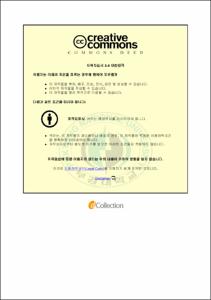비에스테르화 바이오디젤 5% 혼합유의 성능최적화를 위한 실험계획법 적용에 관한 연구
- Alternative Title
- A study on the application of D.O.E for optimization of blending oil with non-esterified biodiesel fuel
- Abstract
- The amount of used bio-diesel fuel is on the increase day by day, because it has a great advantage as alternative fuel for petroleum from a point of carbon neutral. However, bio-diesel fuel now in use has a demerit of cost high due to esterification improving specifications as fuel for diesel engine. It has used as blended oil with gas oil in small quantity to 2 or 3%. There are research results about non-esterified bio-diesel fuel blended with gas oil applied cam type diesel engine and it was available. Non-esterified bio-diesel fuel is more economically than esterified one because of a simple manufacturing process like only filtering. In this study, applicability was considered and performance optimization was accomplished on diesel engine with electronic control system. Tests for this were carried out in order and the results are as follows;
1. Performance tests of blending oil with esterified and non-esterified bio-diesel fuel on diesel engine with electronic control system were accomplished. As the results, the performance of non-esterified bio-diesel blend oil, especially wasted soybean oil, was similar to gas oil than esterified one.
2. Controllable 6 factors were injection timing, pressure of common rail, throttle position, pilot injection, VGT and EGR, and responses were specific fuel consumption and nitrogen oxides. In order to implement the response surface analysis method, 6 factors are selected by 2 or 3 main factors. Thus, 32 tests appling the fraction factorial design were accomplished by 3 repetitions at each load and main effect and interaction were analyzed. The injection timing and pressure of common rail most affected responses, interaction of all factors effected. Thus, the injection timing and pressure of common rail were selected due to main effect and throttle position was selected supplementally.
3. Experiments of performance optimization were accomplished appling the response surface analysis method, because Taguchi method is unable to apply when the interaction effect exists. As the results, optimization level of injection timing was –1.000, pressure of common rail was 0.434 and throttle position was 0.071 at 25% load and then that were 0.753, -1.000 and 0.561 at 50%, respectively.
- Issued Date
- 2015
- Awarded Date
- 2015. 2
- Type
- Dissertation
- Publisher
- 부경대학교 일반대학원
- Alternative Author(s)
- Hea Jung Kimm
- Affiliation
- 부경대학교 일반대학원
- Department
- 대학원 제어기계공학과
- Advisor
- 정석호
- Table Of Contents
- 제 1 장 서론 1
제 2 장 실험장치 및 방법 4
2.1 실험장치 4
2.2 연료유 제조 11
2.2.1 에스테르화 바이오 디젤유와 제조 11
2.2.2 비에스테르화 바이오 디젤유와 제조 13
2.3 실험방법 14
2.3.1 실험계획법 14
2.3.2 실험방법 17
제 3 장 결과 및 고찰 21
3.1 에스테르화 바이오 디젤유와 비에스테르화 바이오 디젤유 성능 비교 21
3.1.1 분사시기에 따른 연소특성 21
3.1.2 커먼레일 압력에 따른 연소특성 22
3.1.3 운전 부하에 따른 연소특성 22
3.2 부분요인배치법 26
3.2.1 주효과 29
3.2.2 교호작용 30
3.3 반응표면분석법 35
3.3.1 신뢰성 검증 35
3.3.2 최적 모델링과 최적 값의 결정 39
제 4 장 결론 49
참고문헌 50
- Degree
- Master
- Files in This Item:
-
-
Download
 비에스테르화 바이오디젤 5% 혼합유의 성능최적화를 위한 실험계획법 적용에 관한 연구.pdf
기타 데이터 / 2.38 MB / Adobe PDF
비에스테르화 바이오디젤 5% 혼합유의 성능최적화를 위한 실험계획법 적용에 관한 연구.pdf
기타 데이터 / 2.38 MB / Adobe PDF
-
Items in Repository are protected by copyright, with all rights reserved, unless otherwise indicated.